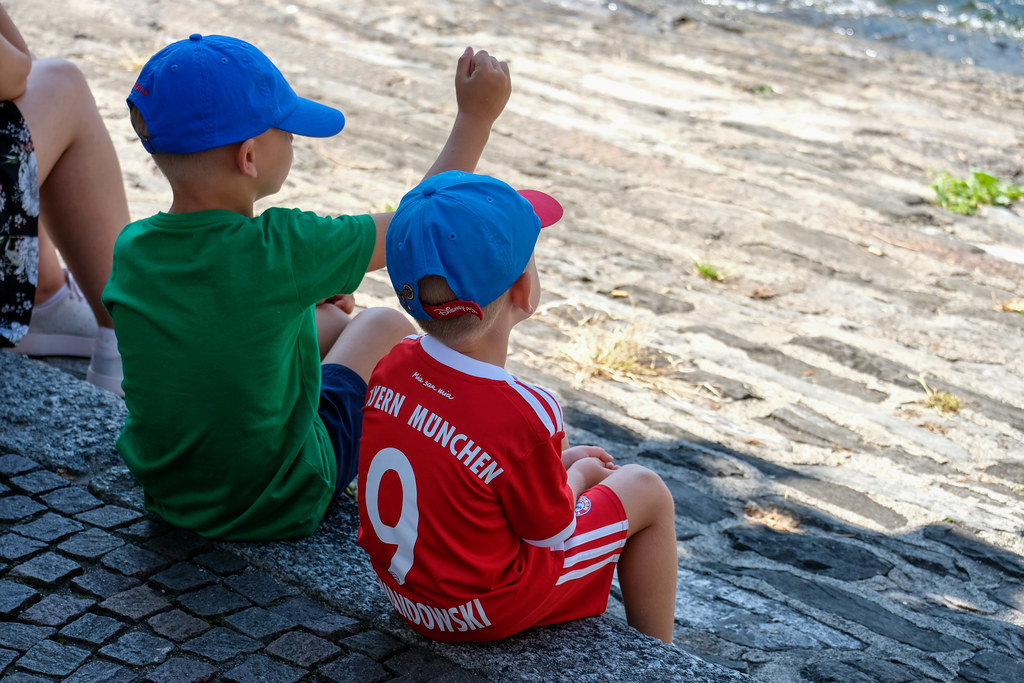Anybody new to Spain from the United States may find themselves either immediately enamored with soccer culture here, or utterly confused. At first glance, in general, sports’ culture varies little from one culture to the next. Fans choose (or in many cases are born into) a favorite team, join together in social groups to view matches, celebrate when their team win, and commiserate when their team loses. Within each society sports serve the same essential function of uniting sports’ fans in an event that provides excitement and bonding. However, the ways in which Spaniards, and Europeans in general, celebrate “football” culture is in many ways different from the way American football is organized.
Growing up in a family where soccer was the sport of choice, at any given time a match from La Liga (the Spanish soccer league), the British Premier League, or any of the various South American leagues could be seen on the television in the family room. A high school ex-girlfriend of mine whose family almost exclusively watched American football and baseball on television gifted me a book called “How Soccer Explains the World” by Franklin Foer (Novelist Jonathan Safran Foer’s brother) which turned me onto one of the largest difference between the way Americans watch football and Europeans watch soccer.

As far as I’m concerned the largest difference which became abundantly clear to me was the presence of political allegiances amongst fans in soccer hooligan culture. By and large, American football team allegiances are politically neutral. Even a diehard Hillary Clinton Miami Dolphins fan and a Donald Trump-voting Make America Great Again preaching Dolphins fan can, usually, come together and watch the Dolphins play, celebrate a loss or lament together over an upset. The reason is that, in general, American football teams are politically neutral. Not only are they politically neutral, but the leagues are devoid of hooligan organizations that accompany not only Spanish, but European football teams. It’s not to say that all fans of my father’s beloved Real Madrid are radical right wing Franco supporters (for that couldn’t be further from the truth in the case of my father), however amongst the ultras, as hooligans are called in Spain, there are clear political tendencies amongst each club’s ultras fans. For a very interesting breakdown of the most radical hooligans and their political allegiances here in Spain, have a look at this fascinating piece published by El País in December of 2014 after two opposing hooligan groups clashed in Madrid resulting in the death of a young Deportivo La Coruña fan.

Even within our beloved Madrid with its two largest teams Real Madrid and Atletico de Madrid and its smaller Rayo Vallecano, a newcomer may be completely oblivious to the political factions within each group of ultras. Real Madrid’s leading hooligan group Ultras Sur, whose numbers are hard to quantify given their outlawed status in Bernabeu stadium, subscribe to an extreme right wing political ideology frequently linked to neo-Nazi movements. Atletico de Madrid’s Frente Atlético is of the same political persuasion and comprised of some 2,500 members. However, from Madrid’s famous working class peripheral neighborhood Vallecas hails the underdog football team Rayo Vallecano. Vallecas, a neighborhood long famed for its working class identity and leftist political activity, the Rayo Vallecano ultras represent the political tendency of the neighborhood. Comprised of somewhere between 300 and 400 members, Los Bukaneros as they are called were founded in 1992 and are defined as anti-racist and anti-fascist with a strong presence not only in the Rayo Vallecano stadium, but also in political protests and demonstrations in Madrid. Given their leftist political ideology, they interestingly have formed alliances with other teams ultras such as the Herri Norte of Athletic Club de Bilbao. A friend who was a fan of Athletic de Bilbao once recounted to me that when the Athletic de Bilbao fans entered the Rayo Vallecano stadium for a match, the Rayo Vallecano fans actually cheered for the Bilbao fans given the political affinity of the two teams. It’s hard for me to imagine Dolphin fans celebrating the arrival of the opposing team’s fans…
Upon mentioning Athletic Club de Bilbao’s affinity to Rayo Vallecano, we touch on another interesting aspect of certain teams in Spain: nationalist sentiments amongst fans of teams in regions with strong independence movements. For many Basque and Catalan fans, both Athletic Club de Bilbao and FC Barcelona are almost seen as national teams for a region without an official national team. Athletic Club de Bilbao’s new San Mames stadium which was completed in 2013 received money from the local government, run by the PNV (the Basque Nationalist Party). Political groups like the Basque National Party see the investment in stadiums as a way of fomenting nationalist sentiment.
So when your students ask you “teacher, which team are you from?” and you find yourself puzzled by the phrasing of the question, the reason is that for many Spaniards your team allegiance runs much deeper than geography. Not always, but in many cases it embodies political, regional, and class identities.

